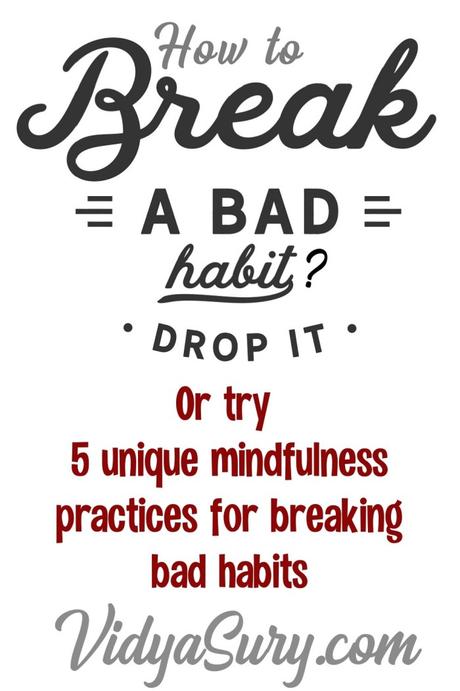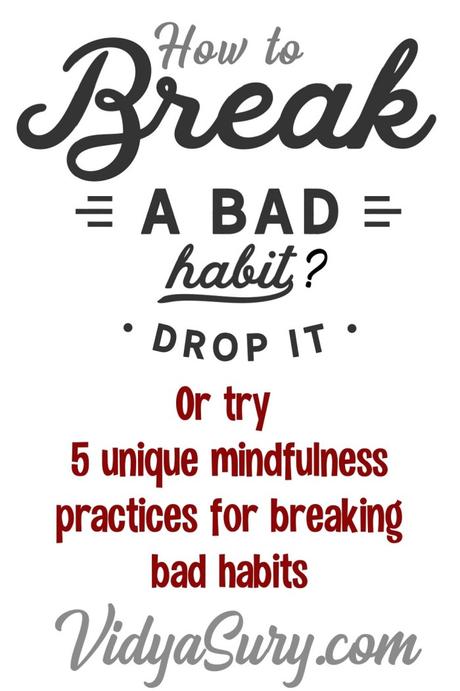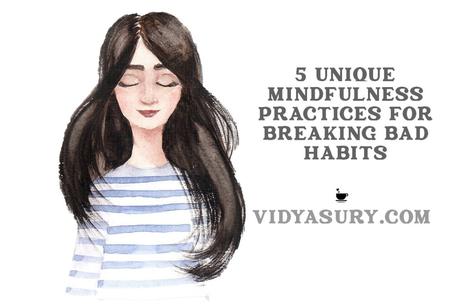
Breaking bad habits is the ultimate Holy Grail. Yes, I use that phrase a lot. Can't help it. We all have bad habits, don't we? Biting nails. Endless scrolling on social media. Late night eating. Procrastination. Fill in the blanks for yourself.
I wish we could just quit one fine day. If only it were that easy! Truth is, all the willpower in the world is not enough to make these habits disappear.
The good news, though, is that there's hope. In his TED talk, Dr Judson Brewer, psychiatrist and author, describes a simple tactic for breaking bad habits: the reward-based learning system.
According to this system, habits are formed in our brain through a simple three-part loop:
- Trigger (the stimulus that starts the habit)
- Routine (the doing of the habit and behavior itself)
- Reward (the benefit associated with the behavior)
This habit loop was first discovered by researchers at MIT and then later popularized in Charles Duhigg's bestselling book, The Power of Habit.
The habit loop demonstrates that when a habit is formed, the brain stops taking part in the decision making. It just becomes lazy or steers the focus to other tasks.
So, unless you resist the habit consciously, unless you switch to a new routine, you will just find yourself following the same pattern on autopilot. Since the brain can't tell the difference between bad and good habits, if you have a bad habit, it simply waits for the right triggers and rewards.
Let's say you have the bad habit of grabbing a bag of potato chips and chomping on them after work. Here's what's happening:
- Trigger (stress from a long day of work)
- Routine (eat a bag of chips)
- Reward (temporary stress relief to feel better)


So why is breaking bad habits hard? Parts of your brain associate your cravings with the bad habits. There's now a loop in your brain and you automatically repeat this behavior without thinking about it. And thus, relief from stress from a long day of work now equates to eating a bag of chips.
Interestingly, here's the weird part. Our brain is wired to avoid pain and discomfort so whenever we're not feeling good, we look for ways to feel better. Suppose you are upset over an argument with someone. Your brain's reaction to this is to find a way to make you feel better. It remembers that time you ate a bag of chips and found relief-and so it nudges you to get that bag of chips to feel better, even though the trigger is something else this time.
The next time the trigger may be something else-sadness, anxiety, anger-because the brain now knows that when we don't feel good for whatever reason, a bag of chips will make us feel good again, bringing on a rush of dopamine. As a result, we avoid the problem thanks to the quick fix and a bad habit is born.
How do we go about breaking bad habits?
The answer is mindfulness. By being present in this moment, we enter a state of intended awareness. Mindfulness is a powerful tool offering a number of simple approaches that can not only help with breaking bad habits like smoking and weight loss but also in stress reduction, improving immunity and heart health, and managing our emotions.
We don't just want to break bad habits-we want to replace them with good ones. Here are 5 unique mindfulness practices for breaking 5 common bad habits.
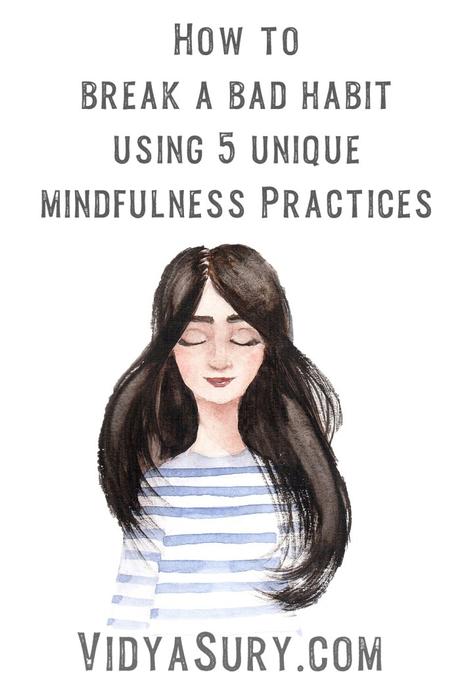
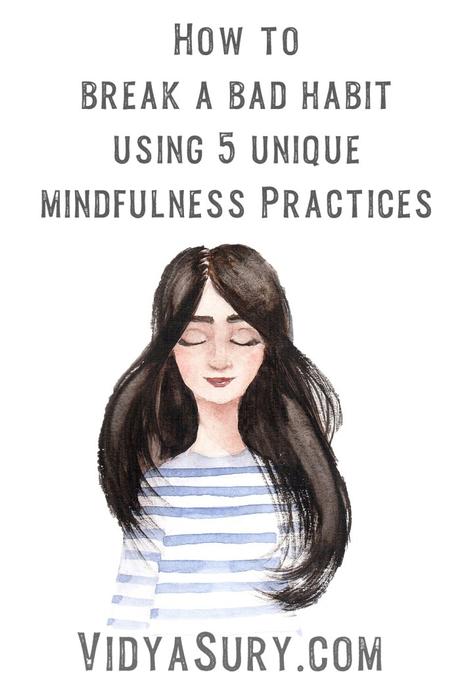
5 unique mindfulness practices for breaking bad habits
1. Visualization for Mindless Snacking
"No one can eat just one." Remember that chips ad? There's something wonderful about snacking. Some snacks are a great source of comfort and leave us feeling good-heavier-but good. They seem like the perfect way to de-stress. Feet up, steaming mug of coffee nearby, big bowl of chips. Just writing this makes me feel warm and fuzzy all over. Unfortunately, we need to know when to stop before it turns into mindless snacking habit. How to break the habit?
Visualization can help with breaking bad habits. The next time you grab that snack or that tub of ice cream, stop for a moment. Visualize yourself eating the ice cream. The whole process-not just a spoon or two. Every single spoon until you finish it. Taste the cream, the sweetness, the cold on your tongue. Imagine yourself relishing the spoonful, swallowing it, and reaching for the next spoonful. After you have done this, pause to see how you feel. Do you still want the ice cream?
One study found that visualizing the process can actually lessen your desire to eat. Sometimes the experience from the visualization is enough to satisfy your craving. Try it.


2. Purposeful Pause for Social Media Scrolling
Social media - arrrgh! Damned if you do, and damned if you don't. Such an integral part of our lives. Tough to stay away from. And while social media has its positive points, for some people it can be a huge source of stress and FOMO, even as it eats up hours of our time. We promise ourselves we'll spend lesser time-and yet we go on. And on. Sure we read tips to increase productivity and stay away from the mindless scrolling, but...you know what I mean.
If you are going through what I just described, what you need is a purposeful pause, if only to reduce the number of hours wasted on those platforms. The next time you are about to click your social media app, take a purposeful pause. Ask yourself, "Why do I want to do this?"
You may be surprised to find out that you are doing it only because you are bored with nothing better to do. Maybe you are avoiding doing something. Or maybe you really need to check that social media channel.
Whatever your answer, when you take the time to pause and reflect, you give yourself the opportunity to think before you click. Maybe you'll change your mind, realizing that it is just an automatic impulse. Maybe you'd rather go on a walk or read a book or tackle something on your to-do list.
After your pause, if you decide to engage in social media, notice how you feel as you scroll. Does it bring you happiness? Joy? Jealousy? Anxiety? Being aware of how you feel might help you choose to stay away. The point is not to avoid social media but to use it consciously. Give it a shot. While I was never crazy about social media, I did find myself spending more and more time on a couple of platforms. I solved the issue by letting my guilt build up and finally removed the apps from my phone. The bliss!
3. Deep Breathing Exercises for Responding to Stressors
Stress is something we all live with. Depending on what we're going through, the levels vary. And it can drive us crazy sometimes, making us lose our cool and lash out, only to regret it later. What should we do when we are stressed, then? Ideally, take a few deep breaths. Then acknowledge the situation and think about the next step.
Deep breathing exercises are a mindful way to respond to stressors and breaking bad habits. Here, we focus on our breathing as we inhale deeply through the nose and exhale through the mouth. This creates a space between what triggers the stress and our response to it. In this space (just like the purposeful pause in #2 above) we get the time to think about how we want to respond rather than doing the first thing that comes to mind.
The deep breathing activates the vagus nerve, which regulates our stress hormones. With repetitive deep breathing, we can activate our sympathetic nervous system to lower our cortisol levels and calm us.
You can do the deep breathing exercises anytime, anywhere you want. Just find a comfortable position. Inhale deeply through your nose, letting your abdomen expand fully before exhaling the air out through your mouth. Focus on your breath. If your mind wanders, gently bring it back to your breathing.
The next time you feel the urge to react to a situation, take a few deep breaths before you do so. See if it helps you stop to think and decide how you want to respond. Maybe you can get rid of some of the stress.


4. Get Curious for Checking Phones
There was this meeting where everyone was asked to put their phone down. The response was laughter. Yes, we are all guilty. The phone is like an extra limb. Even when we're busy doing something, the ping from the phone makes us automatically reach out to look. And we do this without thinking.
How can we resist this urge?
Rather than resist, why not get curious about how we feel when we hear the ping?
- How will we feel if we don't respond to the urge to pick up the phone?
- What if we didn't respond right away to that message?
- What happens to us physically and emotionally?
- Do we feel anxious?
- What are we thinking?
Experience these feelings for what they are, non-judgmentally and with curiosity.
When we accept what we feel between that ping and the check, we realize that these are just physical reactions that come and go. They are not permanent. By letting ourselves go through an unpleasant moment and being aware of how we feel without responding we realize that we are capable of enduring that unpleasantness and getting through it unscathed. This helps us resist the urge and finally get out of the habit loop.
5. Practice Intention for Skipping Workouts
So, you've resolved to wake up at 5.30 a.m. every morning and go for a jog. You set the alarm. It rings. You hit snooze. Ah! Guilty again. While we all want to go through with the intention, it doesn't always work out that way. And by the time you do haul yourself up, it is too late. You promise yourself you'll do better. Maybe work out in the evening? Come evening, and well, it is so much easier to put your feet up because you are exhausted.
Here's where mindful intention helps in breaking bad habits. You stop to think about what you want for yourself and how you intend to get there. What are your goals? What unhealthy behavior is stopping you from getting there?
So, when you want to work out, think about why you want to work out. Do you want to be healthier? Lose weight? Train for an event? What's your motivation? Once you identify this, understand why getting into the habit of skipping workouts harms you, how it impacts you negatively. Next, align your actions with your goals.
Find your intention about why you want to do something to break the bad habit of not following through. This way, the motivation for taking action becomes the driving force to jump out of bed, excited about the workout.
The thing is, breaking bad habits takes time. Try the above mindfulness practices for breaking bad habits. Over time, they will become "habits" that help you replace the bad habits with healthier behavior.
